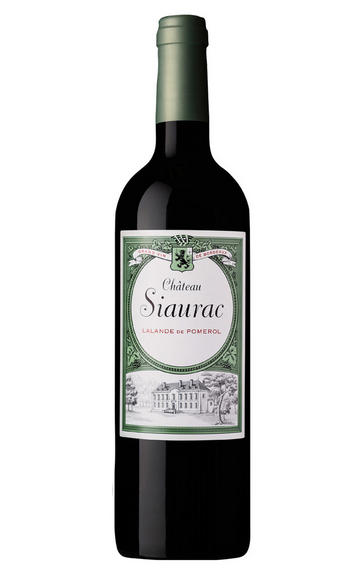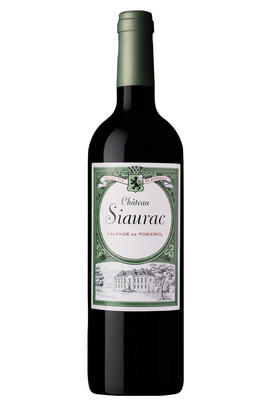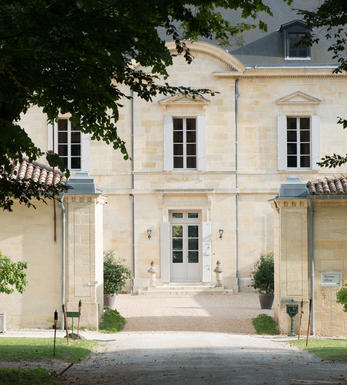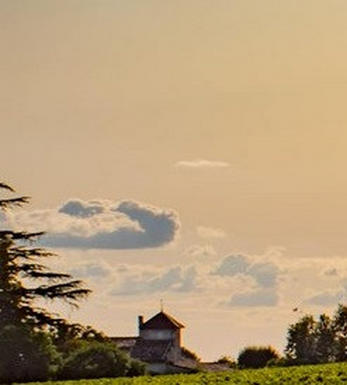
2018 Château Siaurac, Lalande de Pomerol, Bordeaux

Critics reviews
The 2018 Siaurac is a very pretty, silky Lalande de Pomerol. Sweet dark cherry, chocolate, spice and liquorice are nicely delineated. The interplay of fruit intensity and energy makes for a compelling Right Bank red drink over the next few years. This is very nicely done.
Drink 2021 - 2028
Antonio Galloni, Vinous.com (March 2021)
A great Siaurac this year, with a succession of floral notes on the attack and continuing through the palate, playing gently with blueberry and redcurrant fruits. It's juicy and well handled, although there's a touch less ripeness evident than in their Vray Croix de Gay.
The tannins are a touch more rustic, too, but this is a lovely wine with grip and delicacy, and they have very clearly gone for restraint.
Drink 2022 - 2036
Jane Anson, Decanter.com (March 2019)
A soft, attractive red with plum and chocolate, as well as some spice and hazelnut undertones. It’s medium-bodied with medium round tannins and a fresh, savoury finish.
Drink or hold
James Suckling, JamesSuckling.com (March 2021)
As with the 2015, the solar nature of the vintage comes through, but the fruit is purer and brighter. Sweet and gourmand on the palate with ample red fruit, it's less streamlined and serious than the 2016, but there's vitality and balance. There's approachability, but it should age.
Drink 2023 - 2033
James Lawther, Decanter.com (July 2021)
About this WINE

Château Siaurac
Château Siaurac is situated in the Lalande-de-Pomerol appellation of Bordeaux, which is known for producing high-quality wines often compared to those of its more famous neighbor, Pomerol. The estate has been making wine for generations and boasts approximately 46 hectares of vineyards, primarily planted with Merlot, Cabernet Franc, and Cabernet Sauvignon grape varieties. Merlot dominates the plantings, typical for this region and contributes to the wine’s supple and fruity character.
Château Siaurac’s flagship wine is typically a Bordeaux blend dominated by Merlot. The estate also produces a second wine, often called a “second vin,” which may include grapes from younger vines or different vineyard parcels. Like many Bordeaux estates, Château Siaurac emphasizes the importance of terroir, the unique combination of soil, climate, and vineyard practices that influence the character of the wine. The winemaking process involves traditional methods, including fermentation in stainless steel or oak tanks and aging in French oak barrels.
The wines are often described as elegant and well-structured, focusing on ripe fruit flavors, refined tannins, and a harmonious balance. They typically exhibit the classic Bordeaux characteristics of blackcurrant, plum, cherry, and subtle oak influences.

Lalande-de-Pomerol
Lalande-de-Pomerol is situated on the right bank of the Dordogne River, just northeast of Bordeaux. It is known for producing high-quality red wines, primarily made from Merlot grapes, that share many characteristics with the more famous neighbouring appellation of Pomerol.
The appellation covers approximately 1,200 hectares (about 3,000 acres) of vineyards, predominantly planted with red grape varieties, with Merlot being the dominant grape. Cabernet Franc and Cabernet Sauvignon are grown to a lesser extent.
The appellation shares a similar terroir (combination of soil, climate, and environmental factors) with Pomerol, famous for its clay and gravel soils. These soils are ideal for Merlot grapes and are known for their approachability and finesse. They often display characteristics of ripe dark fruits, such as plum and blackberry, along with soft tannins.
Winemakers in Lalande-de-Pomerol often use traditional Bordeaux winemaking techniques, including fermentation in stainless steel or oak tanks and aging in French oak barrels. This approach allows the wines to develop complexity and structure.
Like many Bordeaux appellations, Lalande-de-Pomerol estates may produce second wines, often called “second vins.” These wines are typically made from grapes from younger vines or different parcels within the vineyard. They offer a more accessible and affordable entry into the estate’s winemaking style.
Lalande-de-Pomerol is often compared to its more prestigious neighbor, Pomerol. While Pomerol is known for producing some of the most sought-after and expensive wines in Bordeaux, Lalande-de-Pomerol offers a more approachable price point while still delivering quality wines that share many of the characteristics of Pomerol wines.

Cabernet Sauvignon Blend
Cabernet Sauvignon lends itself particularly well in blends with Merlot. This is actually the archetypal Bordeaux blend, though in different proportions in the sub-regions and sometimes topped up with Cabernet Franc, Malbec, and Petit Verdot.
In the Médoc and Graves the percentage of Cabernet Sauvignon in the blend can range from 95% (Mouton-Rothschild) to as low as 40%. It is particularly suited to the dry, warm, free- draining, gravel-rich soils and is responsible for the redolent cassis characteristics as well as the depth of colour, tannic structure and pronounced acidity of Médoc wines. However 100% Cabernet Sauvignon wines can be slightly hollow-tasting in the middle palate and Merlot with its generous, fleshy fruit flavours acts as a perfect foil by filling in this cavity.
In St-Emilion and Pomerol, the blends are Merlot dominated as Cabernet Sauvignon can struggle to ripen there - when it is included, it adds structure and body to the wine. Sassicaia is the most famous Bordeaux blend in Italy and has spawned many imitations, whereby the blend is now firmly established in the New World and particularly in California and Australia.


Buying options
Add to wishlist
Description
The 2018 Siaurac is a very pretty, silky Lalande de Pomerol. Sweet dark cherry, chocolate, spice and liquorice are nicely delineated. The interplay of fruit intensity and energy makes for a compelling Right Bank red drink over the next few years. This is very nicely done.
Drink 2021 - 2028
Antonio Galloni, Vinous.com (March 2021)
wine at a glance
Delivery and quality guarantee